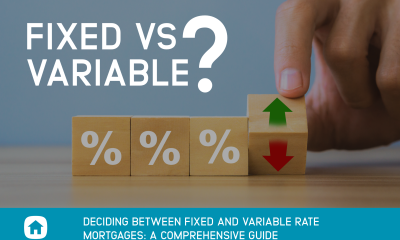(Special) – August is the favourite month in Canada to get married. According to Weddingbells magazine, 67 per cent of weddings in Canada take place between June and September but the most popular month to tie the knot is August, with 23 per cent of weddings taking place in that month.
Experts have long held the view that money can be one of the leading causes of stress and disagreement in relationships, even leading to divorce, which is why it is vitally important that couples getting married this and any month sit down with their partner, talk about money and get a financial plan.
“Money often is the number one reason for problems in a marriage,” Karly Berry, a financial adviser with Sun Life Financial in Kimberley, BC, said in an interview. “Statistics show that 67 per cent of newlyweds believe that marital conflicts arise over money. That’s why financial planning is so important. Sit down and set your goals as a couple to ensure that your financial objectives don’t conflict with each other.”
Berry says one of the first priorities in getting your married finances in order is to recognize and decide on each partner’s financial personalities.
Often, financial disagreements are the results of the partners having different values of money. One in the relationship may be a saver while the other may be more of a spender.
Savers tend to be frugal. They often are good role models for children and tend to be more cautious and longer-term thinkers. Two of them in a relationship may save a lot of money but they could risk losing out on many of the joys of life.
Spenders, on the other hand, tend to be more spontaneous, generous and like to gather and share memories and experiences. However, they tend to amass debt and may lack self-discipline. Two spenders in a relationship could well end up putting the household in a financial mess.
Having two different values of money in a relationship may actually be a good thing, both for the relationship and for the financial health and stability of the couple as opposites tend to attract.
With one saver and one spender the household gets both security and risk. The key is to know which personality you and your partner are, and then set boundaries, such as how much can be spent without consulting your other partner.
Two other top priorities are to pay yourself first and clear up any outstanding debt as quickly as possible.
Couples should sit down and track where their money is going and then find some way to set aside enough to cover the areas where the money is being spent, whether that’s on a spread sheet or putting money in separate accounts, envelopes or even in jars.
Berry suggests couples live off 80 per cent of their income and then set aside the remaining 20 per cent for long-term goals such as buying a house, saving for retirement or building up a contingency fund for unexpected events such as a death, illness or loss of a job.
“If you have two incomes, living off one and saving the other will go a long way to setting yourselves up — whether that be saving for your children’s education, retirement or the unexpected,” Berry says.
Even though they may just be starting out their lives together it’s a good idea to do some long-term planning to protect what they have in the event of the unexpected. This includes preparing a will and considering disability and/or critical illness insurance which can protect you and your family in the event of cancer, heart attack, stroke and other serious illnesses.
“Many employers today have some form of income replacement insurance but if you are self-employed and get sick or injured how will you be able to provide for yourself and your family?” Berry says. “These are relatively new products which have come on the market in the last 15 years that can really help protect you and your loved ones in these circumstances.”
Talbot Boggs is a Toronto-based business communications professional who has worked with national news organizations, magazines and corporations in the finance, retail, manufacturing and other industrial sectors.
Copyright 2018 Talbot Boggs
Talbot Boggs , The Canadian Press

 Buying a Home5 years ago
Buying a Home5 years ago
 Credit6 years ago
Credit6 years ago
 Business4 years ago
Business4 years ago
 5 Mortgage Secrets7 years ago
5 Mortgage Secrets7 years ago
 Buying a Home6 years ago
Buying a Home6 years ago
 5 Mortgage Secrets6 years ago
5 Mortgage Secrets6 years ago
 News12 months ago
News12 months ago
 Business4 years ago
Business4 years ago





